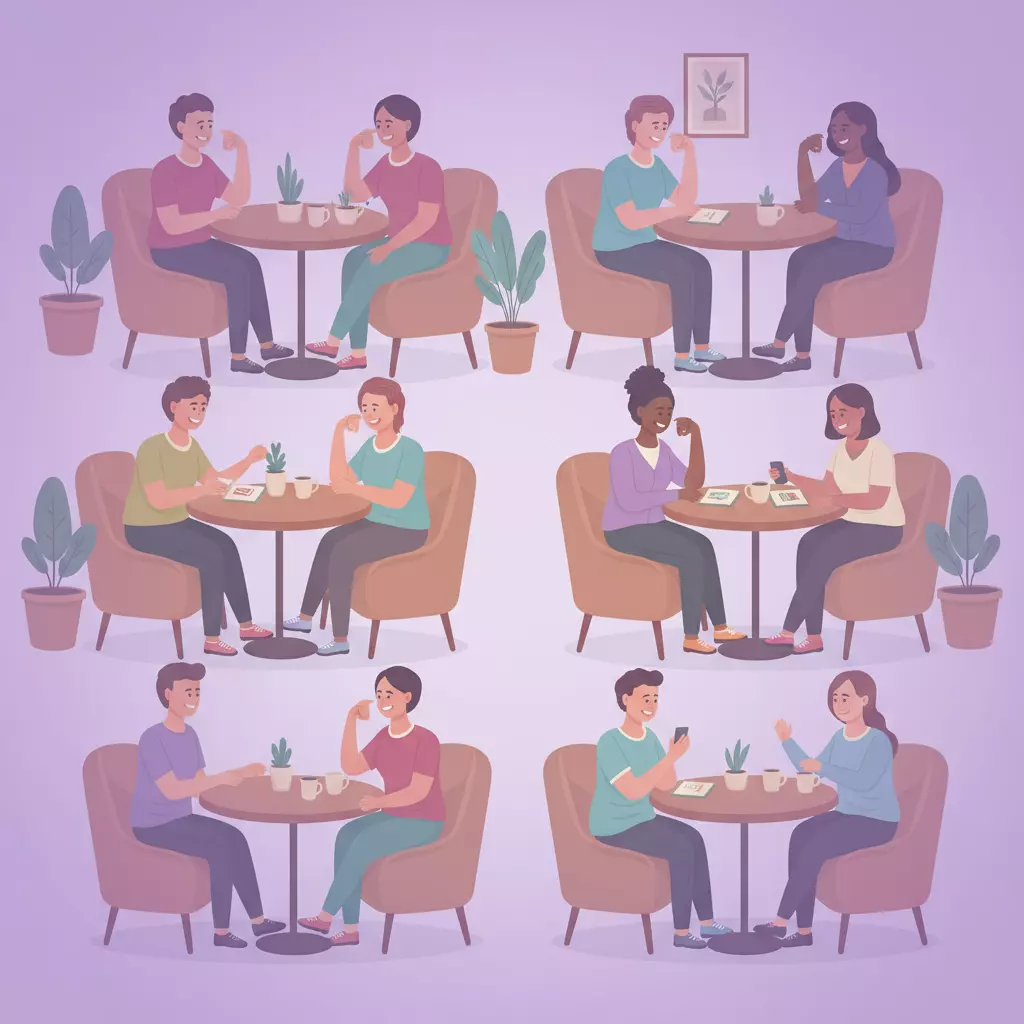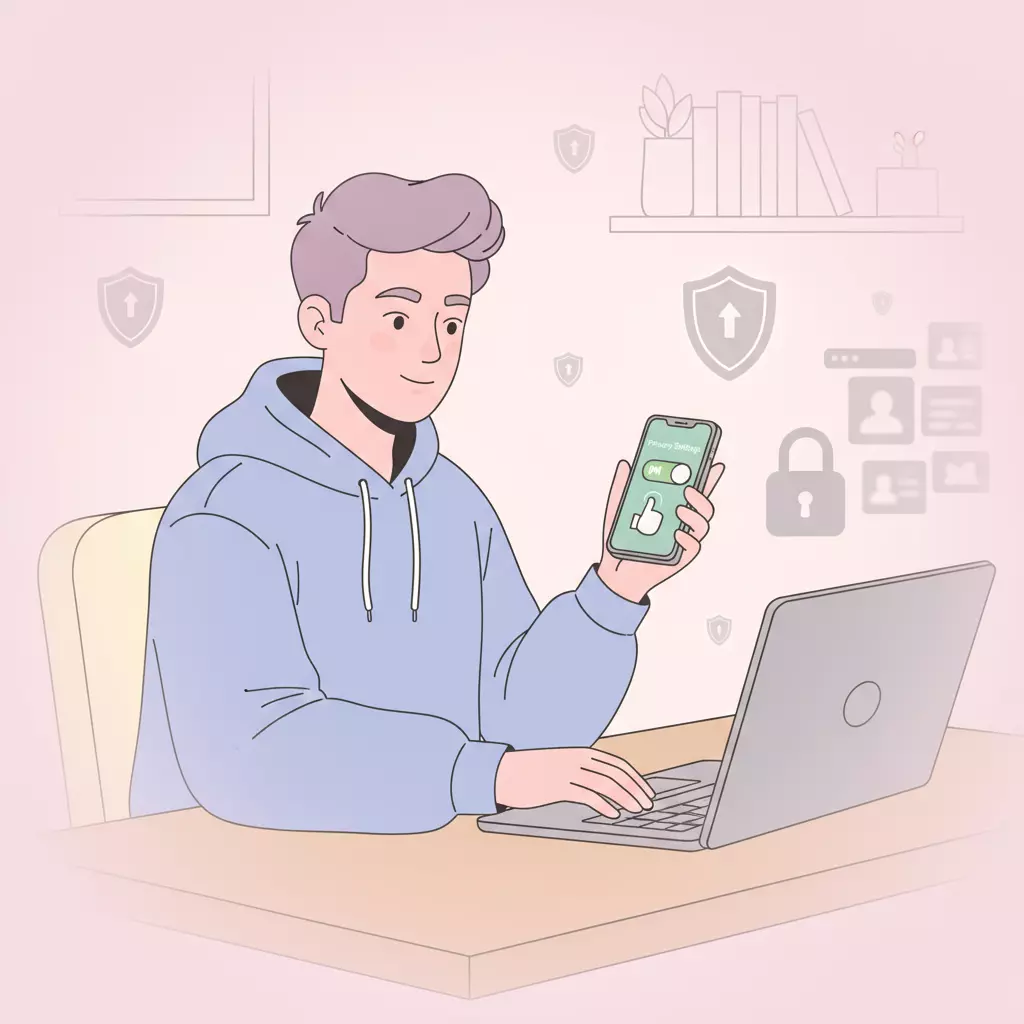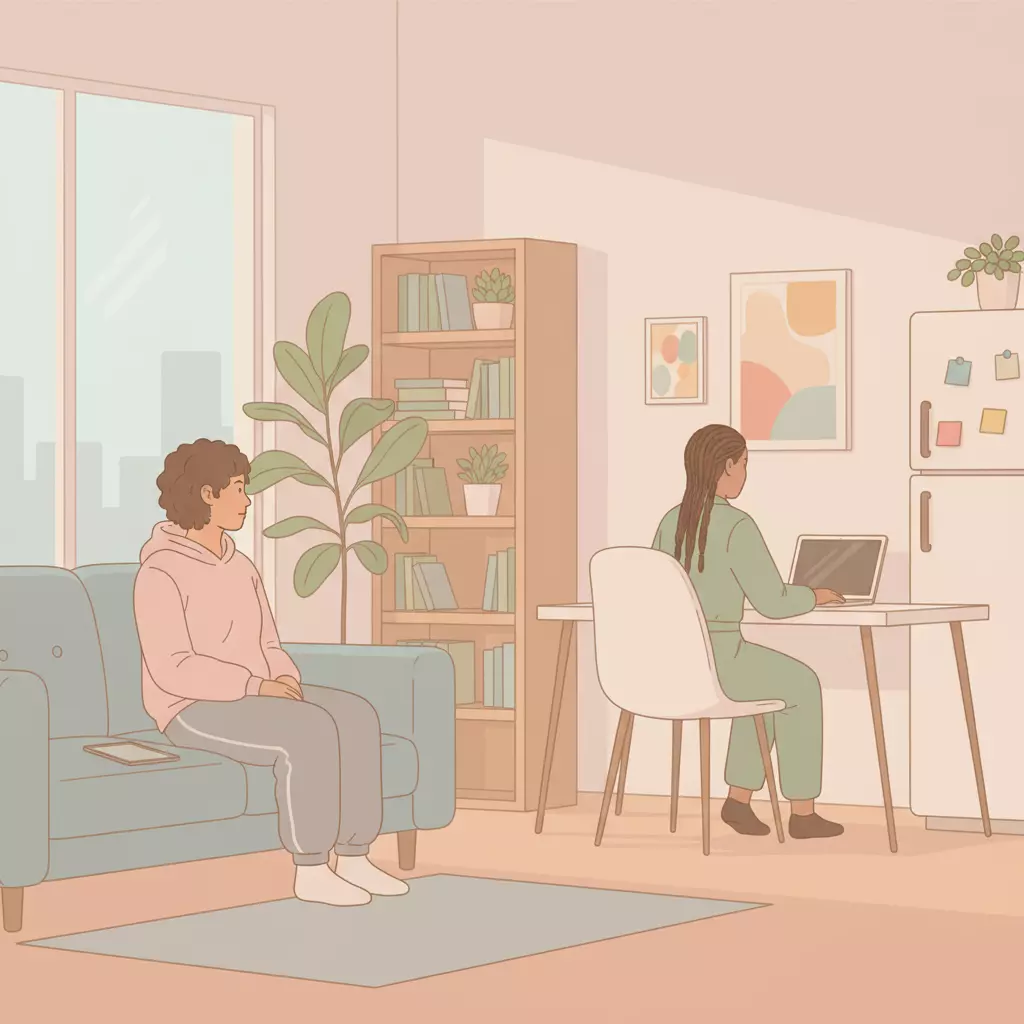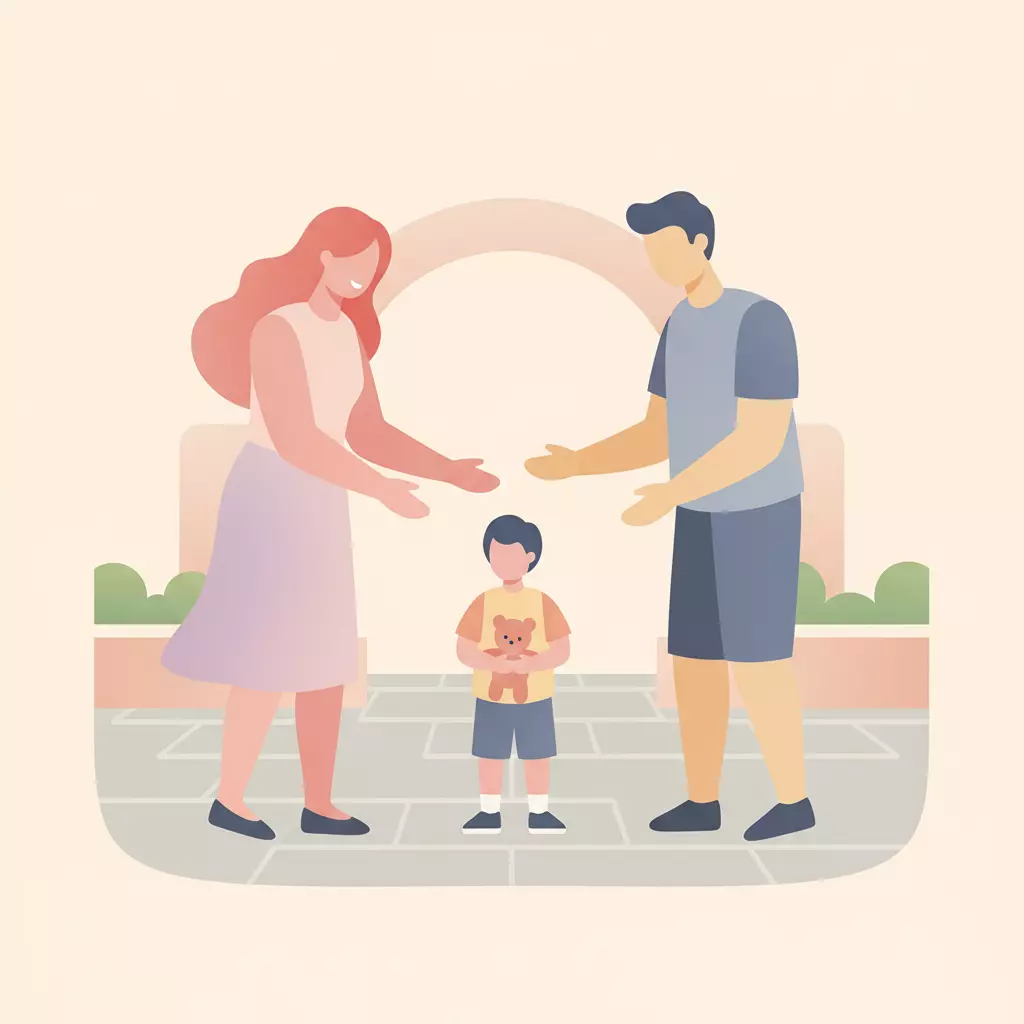Table of Contents
There’s a particular kind of heartbreak that lingers when you share a child with someone you no longer love—or worse, with someone who hurt you. Every text, every exchange at the curb, every knock on the door for pickup—it can feel like the wound never quite closes.
You want to heal, to reclaim your peace, but you can’t just disappear. The child ties you together. And that’s where a different kind of boundary comes in—co-parenting no contact rules. Not total silence, but carefully drawn agreements that let you breathe again while still giving your child stability.
When No Contact Meets Co-Parenting
The classic breakup advice—block their number, cut off contact, disappear—collides with reality when you’re co-parenting.
Studies consistently show that children thrive when both parents remain involved. But it’s not about how often parents interact—it’s about the quality. Respectful, predictable, child-focused communication leads to calmer kids and calmer parents.
For you, that means stripping interaction down to the essentials: health, school, logistics. Everything else? Off the table.
Think of it less as a conversation and more as running a business meeting—brief, polite, on topic, and done.

Rules That Protect You and Your Child
Handovers are the most vulnerable moments—they can spiral into drama if not carefully scripted.
Your best ally here is routine. Same time, same place, same flow. Keep it brief. Don’t linger. Don’t let emotions spill in front of your child. Research shows that kids feel more secure when their world is predictable and free of parental conflict.
- Confirm logistics in writing.
- Never debate or argue during pickup.
- Use a neutral channel (like a co-parenting app).
- Shield your child from tension—always.
These aren’t just rules for them. They’re rules for you too. They protect your healing, keeping you from being pulled back into arguments you’ve already walked away from.

No Contact Isn’t a Game – It’s a Healing Strategy
Let’s examine the No Contact strategy in: Science & Psychology, Planning it, Digital Hygiene, Relapses-Cravings & Crashes, Special Cases & Exceptions… and Signs that it’s working +What comes next.
Tap here to read more →Scripts That Hold the Line
When you’re exhausted, anxious, or triggered, words can fail you. Scripts give you a safety net. They’re pre-built guardrails that keep you calm and factual, even when emotions run high.
- Logistics: “Confirming pickup at 5pm at the school gate. Backpack will be ready.”
- Health: “Dentist appointment Tuesday at 3pm. Report will be in [child]’s bag.”
- Change Requests: “Requesting to shift handover from 4pm to 5pm tomorrow. Please confirm.”
- Boundaries: “I will only communicate about [child]. Thank you for respecting this.”

The Bigger Picture
These co-parenting no contact rules are not about coldness. They’re about clarity. They let you grieve, let you move forward, and still give your child the best possible chance at stability.
Your healing and your child’s well-being are not at odds—they are braided together. The calmer and more boundaried you are, the safer your child feels.
And maybe that’s the quiet grace in all this: you don’t need to fight to prove you’re strong. Strength is in the boundary, in the script, in the choice to keep the focus where it belongs—on your healing, and on your child’s small, steady heart.
FAQ
Q1. What are co-parenting no contact rules?
Co-parenting no contact rules are structured boundaries that allow separated parents to communicate only about child-related matters. These rules minimize emotional conflict while ensuring the child’s needs are met.
Q2. How do I set healthy boundaries when co-parenting with my ex?
Healthy boundaries start with limiting communication to essentials, keeping it factual, and using neutral channels like co-parenting apps. Predictable handover routines protect both your healing and your child’s stability.
Q3. What should I say during child handovers to avoid conflict?
Keep your words brief, polite, and child-centered. Scripts like ‘Pickup at 5pm, backpack is ready’ or ‘Dentist appointment tomorrow, report in bag’ help keep exchanges calm and neutral.
Q4. Can co-parenting no contact rules still help my child feel secure?
Yes. Research shows that children benefit most from stability and respectful co-parenting, even if parents don’t interact much. NC-adjacent rules give kids predictability and shield them from conflict.
Scientific Sources
-
Hjern, A., Bergström, M., Fransson, E., Berlin, M., et al. (2021): Mental Health in Schoolchildren in Joint Physical Custody
Key Finding: Schoolchildren in joint physical custody showed slightly more favourable mental health compared to those in sole custody.
Why Relevant: Demonstrates that co-parenting, even with separation, benefits children’s well-being—supporting NC-adjacent rules.
https://www.ncbi.nlm.nih.gov/pmc/articles/PMC8229623/ -
Nielsen, L. (2002): Joint Versus Sole Physical Custody: Children’s Outcomes Independent of Parent–Child Relationships, Income, and Conflict in 60 Studies
Key Finding: Meta-analysis of 60 studies shows children in shared custody generally have better outcomes, even when parental conflict exists.
Why Relevant: Highlights that structured co-parenting is often healthier for children, suggesting women should adapt No Contact rules.
https://www.twohomes.org/wp-content/uploads/2022/12/Shared-Parenting-Myths-and-Facts-Child-Focused.pdf -
Bergström, M., et al. (2021): Importance of living arrangements and coparenting quality for preschool children’s mental health
Key Finding: High-quality co-parenting after separation reduces behavioural and emotional problems in children.
Why Relevant: Shows why structured, respectful communication and handover scripts are critical when full No Contact is impossible.
https://www.ncbi.nlm.nih.gov/pmc/articles/PMC8160159/
- The Healthy Truth: When Limited Contact After Breakup Heals Better Than No Contact

- No Contact After Short Relationships: Essential Healing or Overkill?

- Working With an Ex After a Breakup: Smart Boundaries & Positive HR Strategies

- Queer Breakup Boundaries: Choosing Limited Contact or No Contact in Overlapping Communities

- Transgender Safety Planning: Essential Steps to Stop Harassment and Doxxing

- Lesbian Breakup Shared Housing: Healing Rules & Smart Exit Plans

- Gay Breakups: Breaking Free from Painful Comparison Loops in Your Scene

- Women’s Guide to Co-Parenting No Contact Rules: Healing Boundaries & Handover Scripts

- Men & Breakups: The Powerful Truth About No Contact in Small Towns and Shared Friend Groups

Leave a Reply